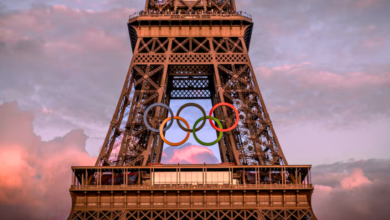
mbaNEWS: These days, the logos are no longer what they used to be before. Being once the cornerstone of the companies nowadays they are just one of the countless elements in the multi-faceted system that makes the brand visual identity. Such an identity should be flexible and coexist with other non-visual elements of the brand such as positioning, promise and the objective of the brand.The truth is that the logos have been overappreciated. Most of them really do not say anything outside their field per se. While they are still important for the awareness and recognition of the brand, they will never be able to tell the brand audience what is the brand or what are its beliefs? The best thing they can do is to be the symbol of the things that only happen after a considerable elapse of time and after spending remarkable amounts of money.The logo is not a brand and the brand is not a logo either. Brands today are multifaceted entities that have been made up of identity and experience. All the design skills cannot create a logo to convince the customer of the appropriateness of a product or a service although experience has proven the contrary.So, what’s the future of logos? What will be the impact of the visual identity over the years and decades? The changing face of the current marketing perspective certainly does not mean that they will be overlooked, but it means that new prospects will be revealed.Dynamic versus StaticToday's logos are not limited to a static repetition. Dynamic logos use multiple repetitions of a mark – or a set of them – to convey different aspects of the brand, such as the brand’s position and character. Sometimes this concept means a logo that changes with each time of observation, and sometimes it means a unique sign mixed with different images of its own context.From the first highly dynamic well-known MTV logo in the 1980s up to the routine examples such as Google Doodle (Google's original logo change on various occasions) and everything else in the middle, we have seen that these logos have slowly become part of the soul of our time. From the perspective of the modern customer, they are a perfectly natural and flawless development in the field of our new media outlook.Customers are no longer the ones who experienced brand engagement in physical stores. Traditional advertisement channels such as TV, print, and radio have transferred the scene into newer digital versions such as email signatures, social networking avatars and application icons. Indeed, because our media landscape is moving fast towards digitization, moving or changing logo design is an intrinsic feature. Sound moving, just like the color of a brand or a typeface can alone be considered a distinctive aspect of visual identity.In the world today, the customer experience and visual identity are in the vicinity of contact points. The future visual identities will be multidisciplinary and interactive. Of course, do not assume that static logos disappear, rather cooperation and interaction between points of contact means that identities – in a different way to the past – have the potential to be transformed into a dynamic form. With dynamic logos, the context is neither the king nor the content.Empiricism rather than ImplicationToday, the most successful brands use experience to inspire and shape their conversations. Brands of tomorrow – as long as they are after concentration, recognizability and relevance – experience will be infinitely more important than the visual identity.In 2017, the Signs.com website asked 150 Americans to draw the 10 famous logos they remember. Guess how many people were able to draw the visual identity of the top brands of the world? Just 16%! We talk about logos that are almost comprehensive and their total annual advertising costs is exorbitant. While only half of the people can say exactly that the Starbucks mermaid has a crown over her head (she has a crown), all the people might be able to say what a sensation they will have by ordering their favorite drink in Starbucks.Brand experience strengthens brand values during interactions at the point of providing services. Experiences fill the gap between the product and the brand guarantee, so that when you have a negative experience with a brand and later in an advertisement you see the focus of the brand on the audience, such a dissonance becomes annoying. John Gardner in the book “The Art of Fiction” describes the story as “a vivid and continuous dream”.Gardner's advice on maintaining the "fictional dream" for the reader–that is, suspension of disbelief, immersion–is top notch.Customers are always eager to suspend their disbelief for a convincing narrative of a brand. And something like a bad experience of a brand cannot bring us back to reality. As a customer, we have a great desire for suspending our disbelief for a credible narrative of the brand, and nothing can distract us from the reality more than a bad experience of our brand.As Daniel Kahneman showed in his Nobel Prize winner about behavioral economics, our remembering self is different from our experiencing self. We do not remember our experiences, but we recall short stories from the “memories of our experiences”. In this direction, we especially recall parts at the peak or end of those experiences.The stories that we tell ourselves about our reminding experiences, can even happen after that reality, because reminding the memory will change the memory itself. That is why social networks are effective in enhancing the impacts of memorable experiences. Kahneman’s last point is that our remembrance self will shape decision-making. Transfer a positive experience from your brand that is continuously enhanced in social networks and there is a greater possibility that your customers will be inclined towards your brand in future.You do not need the customer draw your logo by memory, it is enough to see it and remind his/her positive experiences; memories which will lead him/her to make a purchasing decision and create brand loyalty. You can shape the story of memory by understanding the importance of experience.Evolution instead of ImmortalityThe logos are not supposed to be permanent, at least as previously thought. The market changes at higher speed each year. Once the brands imagined that their identity would remain for generations, but these days they should be very lucky if they could survive for a decade meaningfully.The NBA logo, which was created in 1969 by Alan Siegel featured the essence of the game in a simple but powerful image. This immortal sign became an extraordinary visual identity in all sports. After a modest change in 2017, it is still effective in provoking the spirit of basketball, as it has been doing for more than 50 years.Ober is the opposite point of the brand, and in 2016, only four years after presenting his brand redesigned his logo and in 2018 he did it once again.There were times the design rules ensured that everyone knows how to behave under different circumstances. Today, the leading brands live with key principles and guidelines that ensure continuity along the highest level of flexibility. It is important to know that you must abandon some of the constraints related to the brand in order to maintain your agility. Successful brands will adapt themselves with the conditions during the evolution of business models and their customer experience.Simplicity instead of ComplexityThe logos are not supposed to be complicated. Most of the time the dynamic nature of the media makes people think that the logos should be too complicated. Many business owners believe that the logos should showcase whatever their company offers. The fact, however, is that the more you want a logo, the less effective it will be. Logos can only display some concepts of your brand in a realistic way.It is not that logos have expression limitations because of their nature, rather the simpler ones are more effective. Simple logos are easily recognizable. Think of the logos you see throughout the day. You see a lot of them at once – in grocery, stores, highways, or in social networks. The less the logo information is, the more likely your brain can process and remember it.Research shows that customers are more likely to be inclined towards simple designs when choosing a product. Simple design is able to convey clear and accurate message. The simpler your logo is, the more you can create stronger association with any color or shape that you want to possess.Last Word!You still need a logo, but you should know that these days the logo is not intended to build pillars of your brand. Logos are no more unique and symbolic, rather they are dynamic and multifaceted. Your logo should be an important part of your larger visual identity system.And ultimately it is the experience of a customer that surpasses visual identity.mbanews.ir- Nazanin Kaynejadwww.ignytebrands.com




